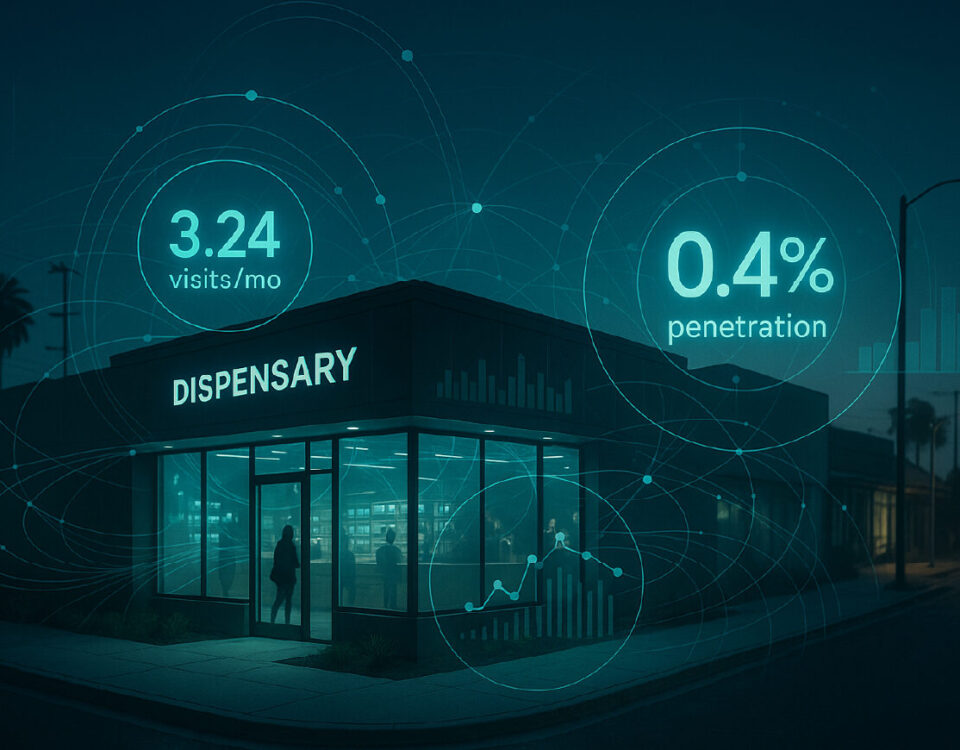From Curiosity to Consistency: What the Data Reveals About the Next Era of Cannabis Retail Behavior

How Dispensaries Can Boost Online Sales and Delivery in Tight Regulatory Environments with shopEQ
September 19, 2025
From Curiosity to Conversion: How NXTeck Data Reveals the Cannabis Shopper’s Holiday Mindset
October 26, 2025When we first started tracking consumer activity across the U.S. cannabis landscape earlier this year, the data told a story of exploration. Visiting multiple dispensaries each month, browsing longer, and chasing promotions like treasure hunts. It was the era of discovery, where choice and novelty drove the market.
Shoppers were still getting their bearings, but now, after several months of consistent state-level data, we’re seeing that story evolve. The cannabis consumer has entered a new chapter, one defined by consistency, confidence, and loyalty.
They’ve become more intentional, more loyal, and more value-driven. They’re not just browsing anymore; they’re building habits, forming preferences, and seeking trusted retail experiences.
In this blog, we’ll unpack what this shift from curiosity to consistency means for dispensaries in 2025, and how understanding these behavioral patterns can help retailers strengthen loyalty, optimize operations, and drive sustainable growth.
The Big Picture: A Market Growing Up
The latest 30-day data from across every legal market shows a clear behavioral pivot:
| Behavior Metric | Earlier This Year | Now | Trend |
| Visit Frequency | 1.9x per month | 1.95x per month | Steady, habitual |
| Average Dwell Time | 9.8 minutes | 9.5 minutes | Slightly shorter, more efficient |
| Dispensaries per Visitor | 1.33 | 1.26 | Less cross-shopping |
| Emerging Market Dwell | 8.0 minutes | 9.5 minutes | Confidence rising |
| Mature Market Volatility | High | Low | Stabilizing |
What’s clear from these numbers is that cannabis consumers are no longer hopping between multiple dispensaries searching for “what’s good.” They’ve settled into routines, know what they like, and are becoming more predictable in how, where, and when they shop.
This shift toward consistency is a crucial signal for dispensaries: the behaviors that used to be driven by curiosity are now driven by confidence and loyalty, creating new opportunities for retention, targeted promotions, and operational efficiency.
Mature Markets: Loyalty Over Novelty
States like California, Colorado, Oregon, and Michigan show consistent visitation patterns (2.0 to 2.6 visits per consumer per month) but shorter dwell times.
What that tells us:
- Shoppers have built routines.
- They’re spending less time browsing and more time replenishing.
- Price still matters, but the excitement of “new” has given way to the efficiency of “known.”
This is the hallmark of market maturity: habit formation.
Retailers in these states are shifting from acquisition to retention, using loyalty programs, personalized offers, and convenience-based messaging to keep their base engaged.
Growth Markets: Discovery with Direction
In states like New York, Massachusetts, and New Jersey, dwell times remain the longest in the nation — between 12 and 15 minutes — but have stopped rising.
That plateau means consumers are moving from education to evaluation.
They’ve learned about the shelf and now know what connects with them.
For brands, this is the moment to:
- Introduce premium tiers and experience-driven products.
- Focus marketing on trust, consistency, and differentiation, not just “first-time curiosity.”
The next phase for these markets will be defined by brand preference, not just access or novelty. It’s about being the brand customers trust and prefer. Retailers who understand this shift and adapt their offerings, marketing, and experiences accordingly can capture repeat business and build lasting loyalty, turning informed, intentional shoppers into lifelong customers.
Emerging Markets: From Patient to Shopper
In Mississippi, West Virginia, Texas, and Utah, we’re witnessing the early signs of transformation from medical necessity to consumer preference.
Dwell times are creeping up; visit frequency is rising, and even cross-shopping; though still low, is starting to appear.
This is the earliest indicator of comfort and curiosity taking root.
As regulations loosen and competition grows, these states will evolve rapidly into the “education-heavy” phase that defined the Northeast a year ago. Retailers who act now can get ahead of the curve by optimizing product displays, offering guided education




